In traversing between Amsterdam and Budapest the S.S. Maria Theresa went through a total of 68 locks for a total rise to the height of 1331 feet at the European Watershed.
One of the major engineering marvels of the trip is the Main-Danube Canal, connecting the Main and Danube Rivers, running from Bamberg via Nuremberg to Regensburg. It provides for a constantly navigable connection from the Rhine Delta at Rotterdam in the Netherlands to the Danube Delta in eastern Romania. It thus connects the North Sea and Atlantic Ocean with the Black Sea. It was completed in 1992 and is 106 miles long.
First, we have an example of a low bridge. This is a modern bridge on a modern canal, but because the river boat tourist industry wasn't envisioned when the system was built, the bridge height was optimized for barge traffic. If you look further down the canal you will see the lock we are about to enter.

This bridge was so low that the top deck level was closed and everything up there collapsed and retracted. Only the captain's head sticks up from the port auxiliary control station.


Very low clearance, probably around eighteen inches or so which means it clears the collapsed awnings and railings by less than a foot.

Now we are approaching the lock. Another river boat headed in the opposite direction has just cleared it.
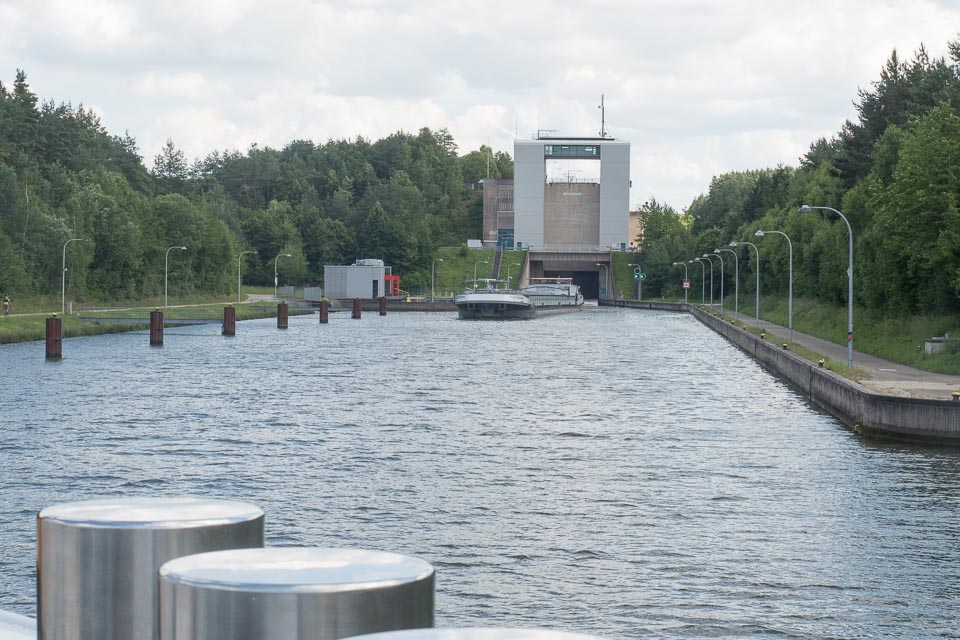
The captain has the boat lined up and he's ready to enter. The green signal lights on the right give him clearance to proceed.

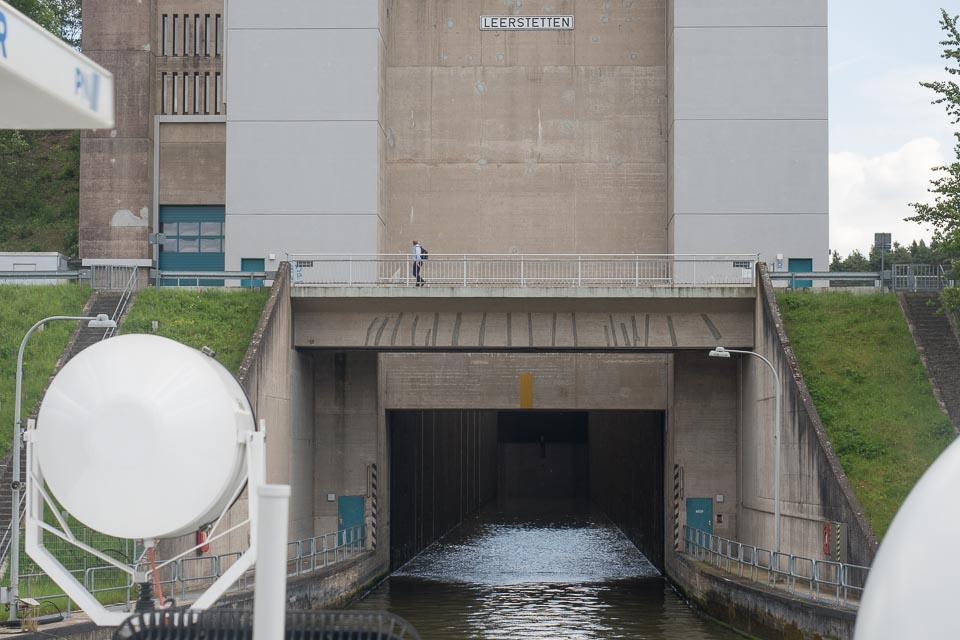
Entering through the lock gate.
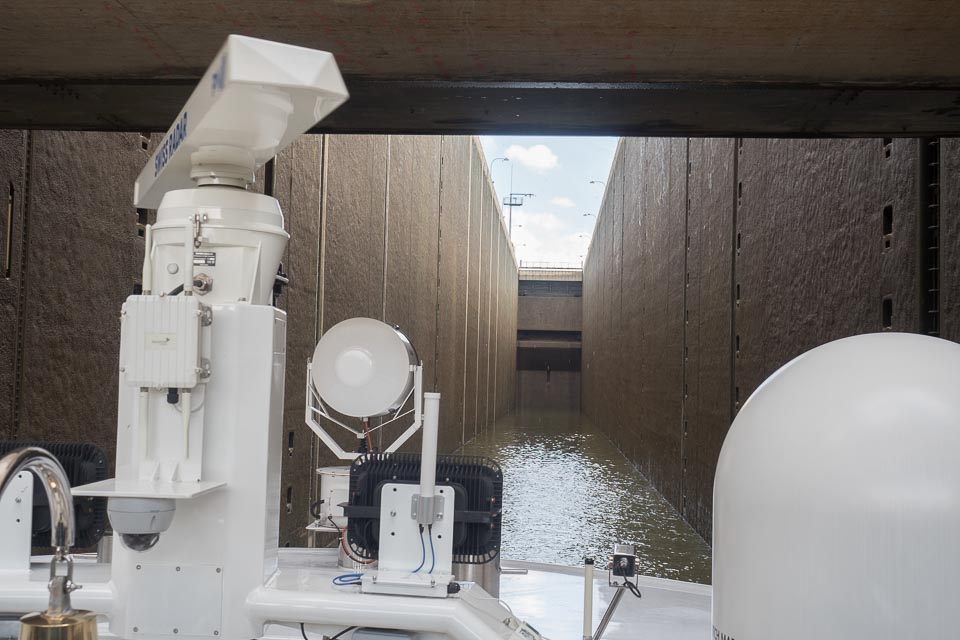
This was one of the deepest locks. It will lift the boat around 80 feet.

Ladders the deck crew use if necessary. More likely used when a boat is lowered so they can come down after the lines are cast off up top.
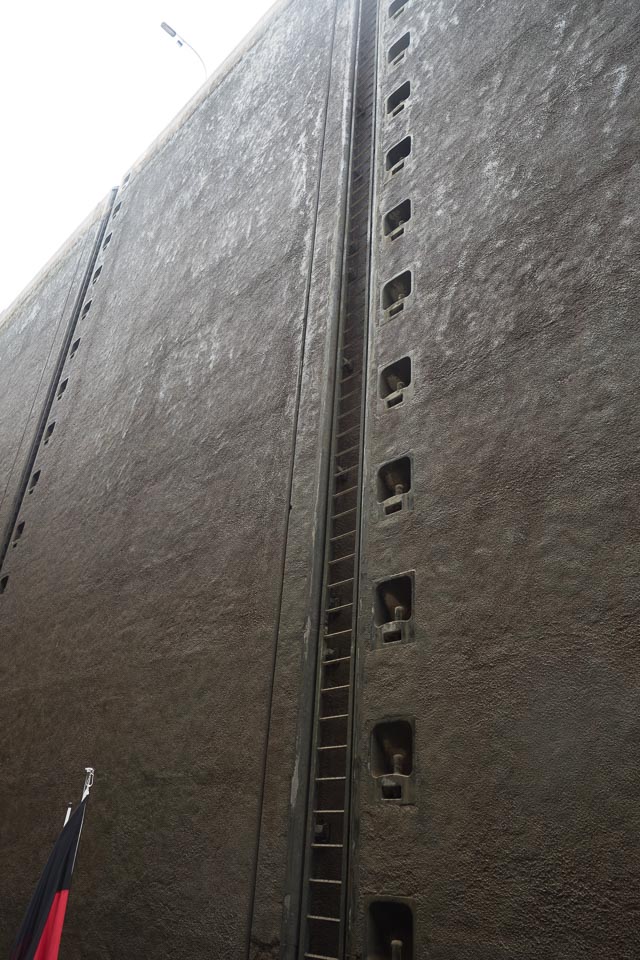
On the way up.
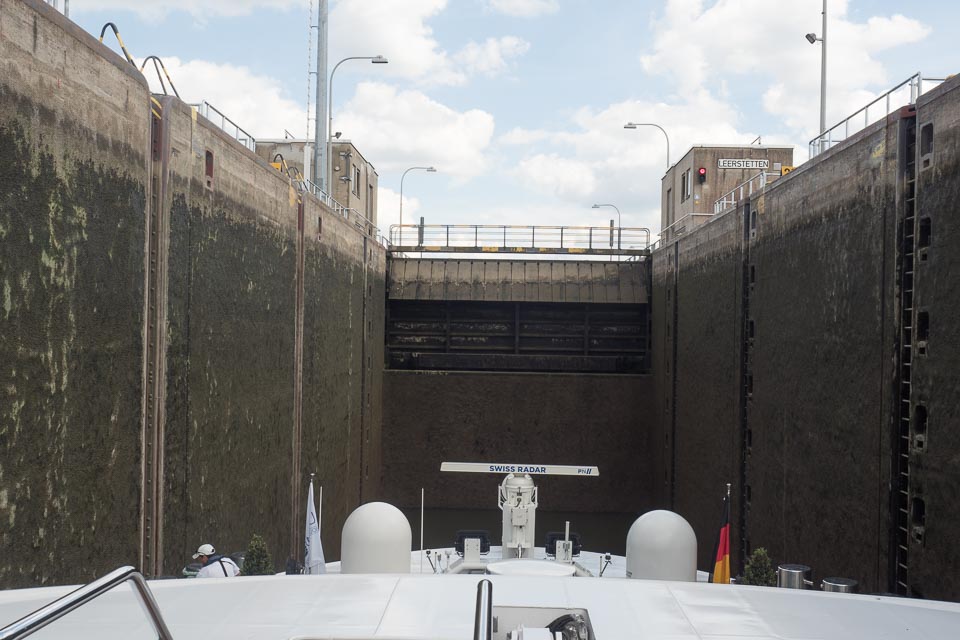
There's the canal!
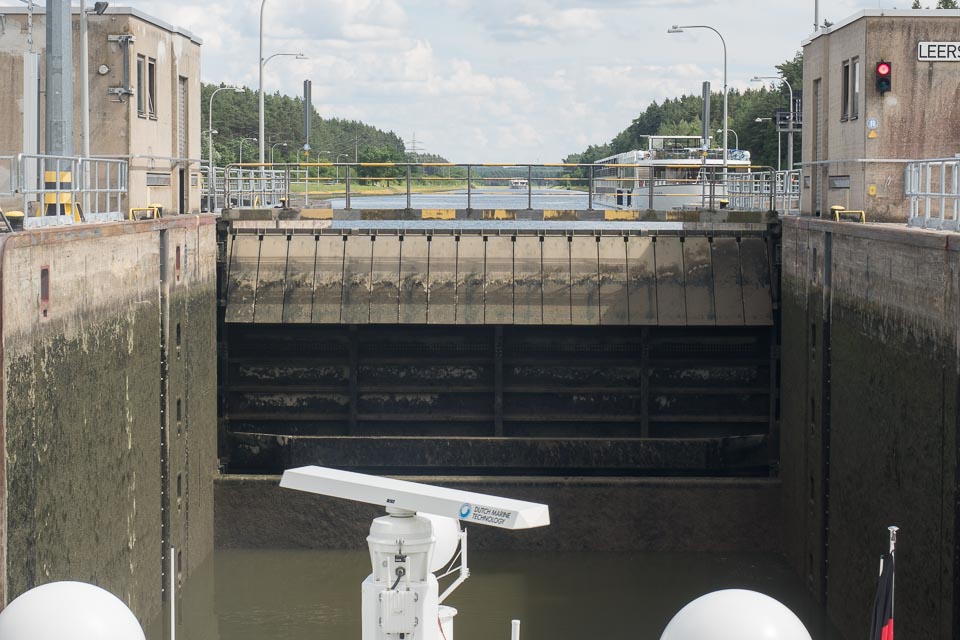 The water levels are equalized and the gate is about to open.
The water levels are equalized and the gate is about to open.
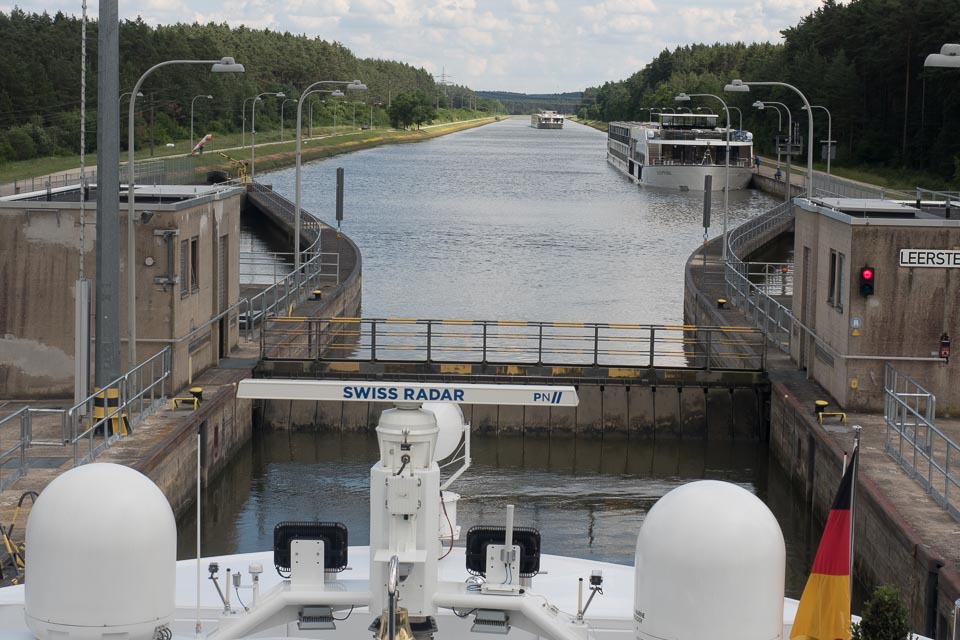
Two river boats awaiting their turn to go down.

On the next page you'll see the boat going down and have a glimpse into how the lock works. Plus, an unexpected variation of a bridge!